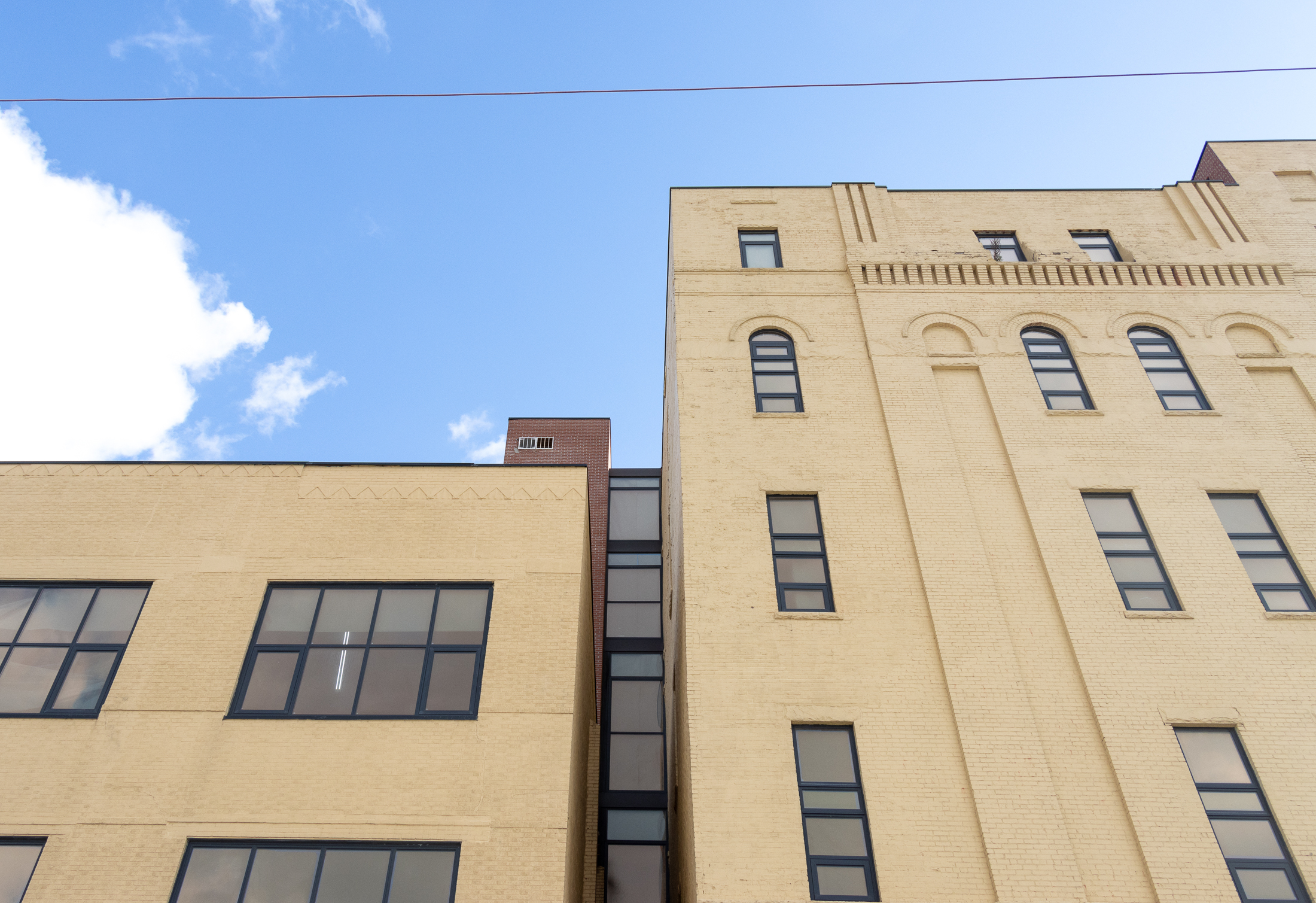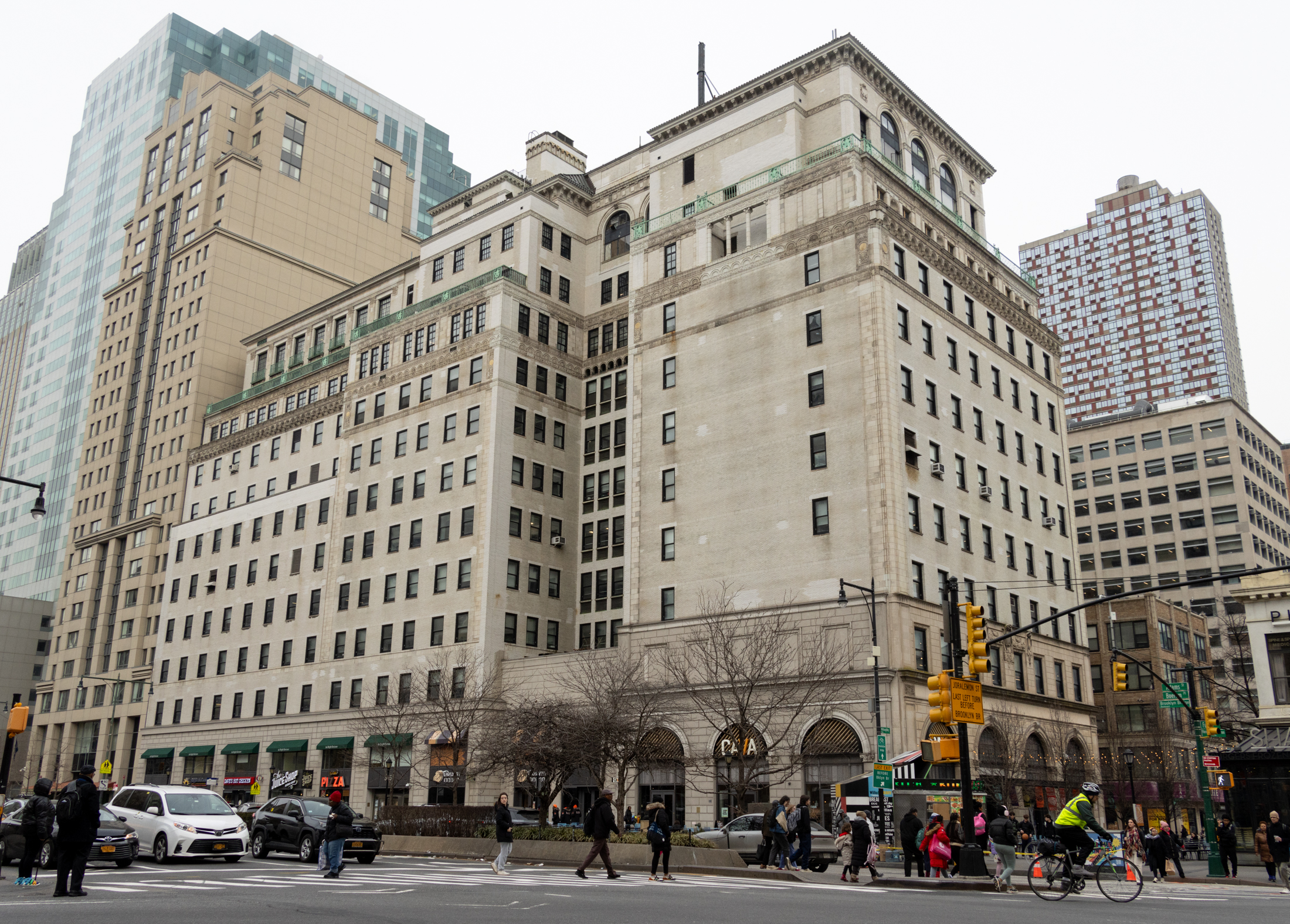Building of the Day: 50-52 Washington Avenue
Brooklyn, one building at a time. Name: Warehouse Address: 50-52 Washington Avenue Cross Streets: Flushing and Park Avenues Neighborhood: Wallabout Year Built: late 1880s – early 1890s Architectural Style: Romanesque Revival Architect: Unknown Landmarked: No The story: I love a good warehouse building, or two. In my fantasy life as a rich person, I dream…

Brooklyn, one building at a time.
Name: Warehouse
Address: 50-52 Washington Avenue
Cross Streets: Flushing and Park Avenues
Neighborhood: Wallabout
Year Built: late 1880s – early 1890s
Architectural Style: Romanesque Revival
Architect: Unknown
Landmarked: No
The story: I love a good warehouse building, or two. In my fantasy life as a rich person, I dream of owning one of these beauties as a work/living space, with plenty of room to indulge in my decorating fancies. I love the windows, the brick, the terra cotta trim, the whole industrial vibe of this place, with the well- worn floors and supporting beams, the heavy hand-hewn crossbeams, and the high ceilings. As a lover of both architecture and history, I appreciate the building’s history, and I certainly appreciate the architecture. Those Victorians were great at combining function with beauty, and the result is a building like this, with huge arched windows on the third floor, echoing the smaller windows and entryways below. It’s perfect. Perfect size, perfect number of floors, just perfect.
These two buildings, used as one, were one of many warehouses, factories and storehouses used in the many food related businesses that were concentrated in this part of Wallabout. The Wallabout Market, once the city’s largest wholesale and retail marketplace, was just across the street. The companies that settled around it mostly dealt in wholesale food. They packaged or sold coffee, tea and sugar products, candy, spices, flour, fruits, and processed foods. They made cookies and baked goods, lots of candy and sugar products, and they stored those and other products in the many warehouses in the area. From these warehouses, raw materials and finished foodstuffs were shipped to stores and suppliers across the country, and even across the world. It was quite an empire.
Industrial buildings need to be strong, watertight, and often airtight. But the Victorian aesthetic also allowed for beauty. So buildings like this also could have light and air, probably because these were not just warehouses, but probably had offices and/or workrooms as well. The architect gave the façade a beautiful and classic Romanesque Revival look, with arches articulated as well as implied. The large arched windows on the third floors help bring the line of the arches down past the second floor, even to the first, in spite of the canopy of the first floor loading docks. The pilasters are capped with classical ornament, and the buildings’ rock-faced stone base is topped with brick façade, decorated with square blocks of terra-cotta set in the spandrels of the arches.
I wasn’t able to find out who was the original tenant, but there was a fire on this block on January 7, 1907, and the report made out by the fire department lists these stores as home to a company that sold spices and coffee. It didn’t list any company names. That is the only reference I found. I’m sure I could find out more by searching in city directories, which are not on line.
At any rate, after World War II, this entire area began to slowly close down to industry. Most of the warehouses and small factories became nothing more than storage buildings. Windows and doorways were boarded up. Even today, much of Wallabout is now occupied by storage buildings; every large former factory and warehouse seems to now be filled with self-storage facilities. New Yorkers with small apartments have a lot of stuff.
A photo of 50-52 Washington from the 1980s shows a rundown, mostly boarded up storage building. So does a more recent photo from 2007. But there are newer signs of life in the old buildings lately. The plywood is coming down from the windows, and curtains are going up. I don’t know what the plans are for this building, but Wallabout is getting a lot of attention, and will no doubt be a new hot spot. I fully expect someone will take my dream and run with it, and this will be filled with very expensive and quite beautiful loft apartments. GMAP
(Photo: Christopher Bride for Property Shark, 2012)












Its a great block! Lots of potential. Saw the lofts at 66/68 Wash and they were nice.